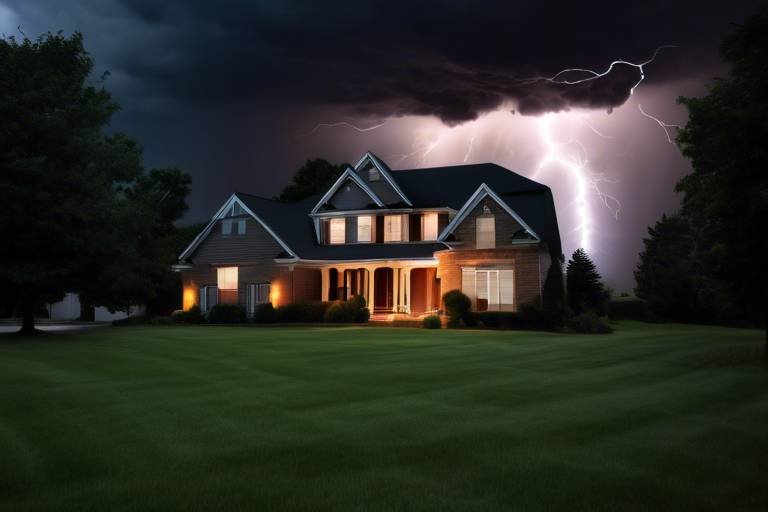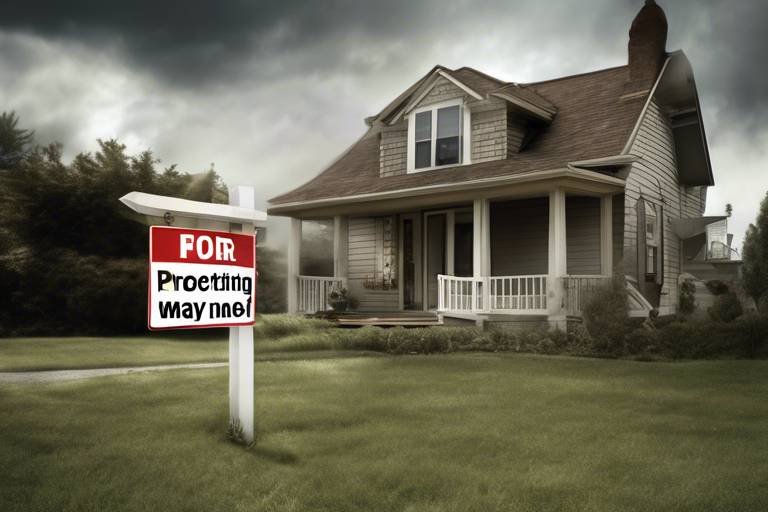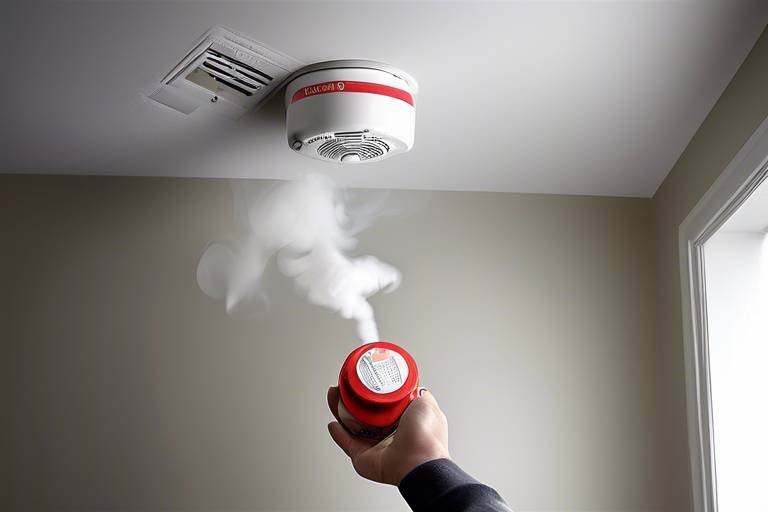Protecting Your Home During Wildfire Season
Wildfire season can be a time of great anxiety for homeowners, especially those living in areas prone to these devastating events. The reality is that wildfires can strike with little warning, turning a peaceful day into a frantic race for safety. But fear not! With the right strategies and preparations, you can significantly reduce the risk to your home and ensure the safety of your loved ones. This article explores essential strategies and tips for safeguarding your home against wildfires, ensuring your safety and minimizing property damage during wildfire season.
To effectively protect your home, it's crucial to understand the factors that contribute to wildfire risks in your area. Wildfires thrive under specific climate conditions, such as prolonged dry spells, high temperatures, and strong winds. Additionally, the type of vegetation surrounding your home plays a significant role in fire risk. For instance, areas with dense brush or dry grasses are more susceptible to wildfires. Historical data can also provide insight into past wildfire occurrences, helping you assess your risk level. By being informed about these factors, you can better prepare your home for potential threats.
One of the most effective ways to protect your home from wildfires is by establishing a defensible space around your property. This space acts as a buffer zone, reducing the chances of flames reaching your home. It involves thoughtful landscaping, proper vegetation management, and adequate spacing between plants to minimize fire hazards. Think of it as creating a protective shield around your home. A well-maintained defensible space can significantly increase your home's chances of surviving a wildfire.
When it comes to landscaping, not all plants are created equal. Some can act as fire ladders, carrying flames to your home, while others can provide a fire-resistant environment. To create a safe landscape, consider the following techniques:
- Choose fire-resistant plants that are less likely to ignite.
- Maintain proper spacing between trees and shrubs to prevent flames from jumping.
- Use hardscaping elements like gravel or stone to create non-flammable zones.
By implementing these landscaping techniques, you can create a beautiful yet safe environment around your home.
Understanding which types of plants are less likely to ignite is crucial for fire safety. Opt for native plants that are adapted to your local climate and are less flammable. Some excellent choices include:
- Lavender: Known for its aromatic scent, lavender is also fire-resistant.
- Succulents: These water-rich plants are less likely to catch fire.
- Rockrose: This hardy plant is both beautiful and fire-resistant.
Incorporating these plants into your landscape can help enhance fire safety while adding aesthetic value to your property.
Regular maintenance of your defensible space is essential to keep it effective. This includes:
- Pruning trees and shrubs to reduce their height and remove dead branches.
- Clearing debris such as leaves and twigs from your yard.
- Watering your plants regularly to keep them healthy and hydrated.
By staying on top of these maintenance practices, you can ensure that your defensible space remains a strong line of defense against wildfires.
The materials used in your home's construction and its design can significantly impact its resilience to wildfires. When building or renovating, consider using fire-resistant materials such as stucco, brick, or metal roofing. Additionally, architectural features like ember-resistant vents and tempered glass windows can provide added protection. Think of your home as a fortress; the right materials can make all the difference in keeping the flames at bay.
Establishing an emergency preparedness plan is crucial for wildfire season. This plan should include creating evacuation routes, communication strategies, and assembling emergency kits for your family. Being prepared means you can act quickly and efficiently when the need arises.
Identifying and planning multiple evacuation routes from your home is essential in case of a wildfire emergency. Familiarize yourself with these routes and practice them with your family to ensure a quick and safe escape. Think of it as a fire drill; the more prepared you are, the more confident you'll feel when it matters most.
Setting up effective communication strategies with family members and neighbors is vital for staying informed and coordinated during a wildfire event. Establish a family meeting point and ensure everyone knows how to reach each other in case of an emergency. Utilizing group messaging apps can help keep everyone in the loop, even when chaos ensues.
Staying updated on wildfire conditions and alerts is essential for timely responses to threats. Various resources, including local news, social media, and emergency services, can provide vital information during wildfire season. Make it a habit to check these sources regularly, especially during high-risk periods.
In today's digital age, numerous technological tools and apps provide real-time updates and alerts about wildfire risks in your area. Apps like FEMA and Red Cross can keep you informed about evacuation orders and safety tips. Think of technology as your lifeline; it can help you stay one step ahead of the flames.
Local community resources and organizations can offer invaluable support during wildfire season. Many communities have established programs to assist residents with preparedness and recovery efforts. Engaging with these resources can provide you with essential information and support to help keep your home and family safe.
Q: How can I find out if my home is in a wildfire-prone area?
A: You can check with your local fire department or use online tools that provide maps of wildfire risk zones to determine if your home is in a high-risk area.
Q: What should I include in my emergency kit?
A: Your emergency kit should include essentials such as water, non-perishable food, medications, first-aid supplies, flashlights, batteries, and important documents.
Q: How often should I maintain my defensible space?
A: Regular maintenance is key; aim to inspect and maintain your defensible space at least once a season, or more frequently during dry months.
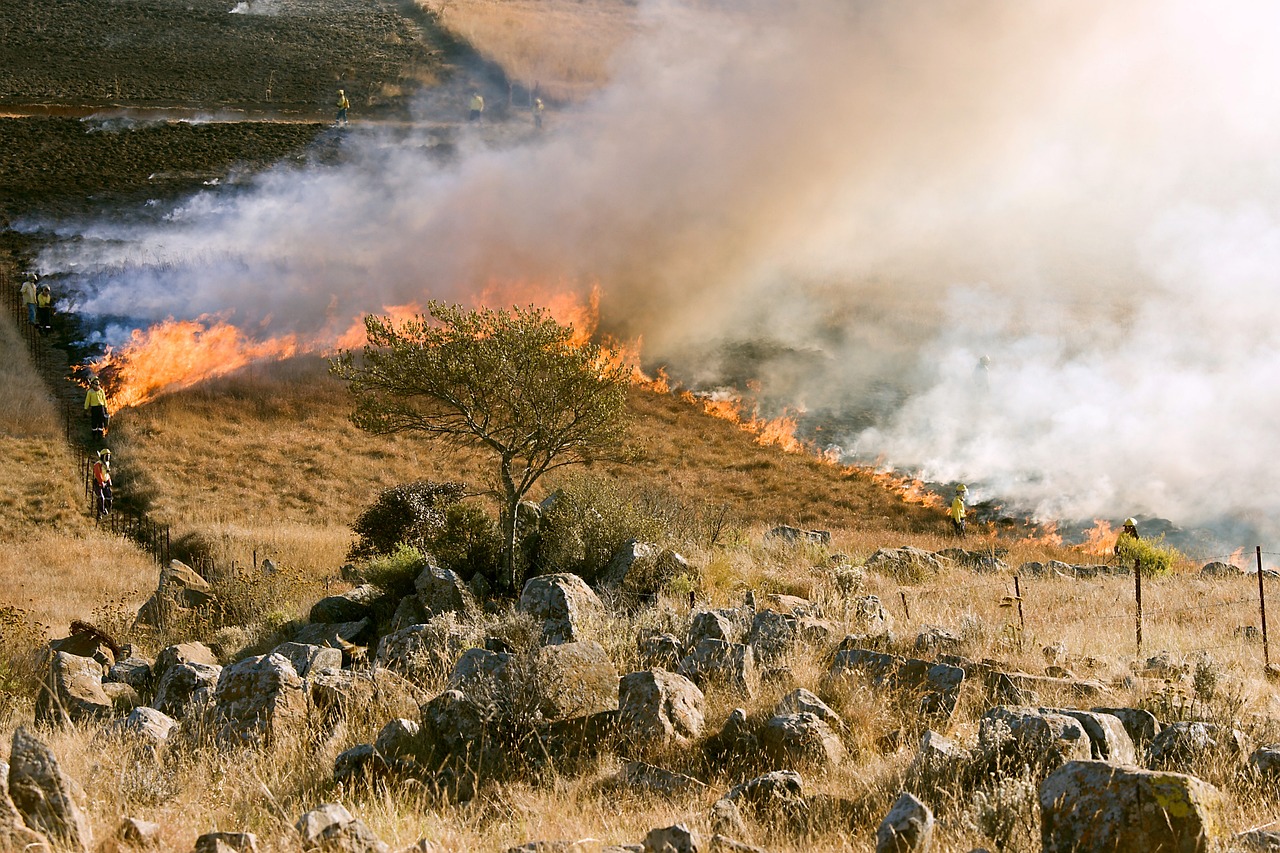
Understanding Wildfire Risks
When it comes to protecting your home from wildfires, understanding the risks involved is the first step. Wildfires can ignite unexpectedly and spread rapidly, fueled by various environmental factors. The climate in your area plays a significant role in determining how susceptible your surroundings are to wildfires. For instance, regions that experience prolonged periods of drought or high temperatures are at a greater risk. Additionally, the type of vegetation surrounding your home can either mitigate or exacerbate these risks. Dense forests, dry grasses, and shrubs are notorious for their ability to catch fire and spread flames quickly.
Historical data can also provide valuable insights into wildfire risks. By examining past incidents in your area, you can identify patterns and trends that might indicate when and where wildfires are most likely to occur. For example, if your neighborhood has a history of wildfires during certain months, it’s crucial to ramp up your preparations during that time. Understanding these risks empowers you to take proactive measures to safeguard your home and family.
Here are some key factors that contribute to wildfire risks:
- Climate Conditions: Hot, dry weather increases fire risk.
- Vegetation Types: Certain plants are more flammable than others.
- Topography: Steep slopes can cause fires to spread more rapidly.
- Human Activity: Campfires, discarded cigarettes, and other human actions can ignite wildfires.
It's also essential to consider the topography of your area. Fires tend to travel faster uphill, making homes on slopes particularly vulnerable. As the flames rise, they can catch on nearby trees and shrubs, creating a firestorm effect that can be devastating. This is why knowing the layout of your landscape is critical in assessing your wildfire risk.
Lastly, human activity is a significant contributor to wildfire risks. Campfires left unattended, fireworks, and even sparks from equipment can ignite dry brush and lead to catastrophic fires. Being aware of your surroundings and local regulations regarding fire safety can help mitigate these risks.
In summary, understanding wildfire risks involves a combination of recognizing environmental factors, analyzing historical data, and being aware of human influences. By doing so, you can better prepare your home and family for the potential threats posed by wildfires.
Q: What are the main causes of wildfires?
A: Wildfires can be caused by natural factors like lightning or human activities such as campfires, discarded cigarettes, and power lines.
Q: How can I find out about wildfire risks in my area?
A: You can check local news, government websites, and fire department resources for information about wildfire risks and alerts.
Q: What steps can I take to reduce wildfire risks around my home?
A: Create a defensible space, use fire-resistant landscaping, and maintain your property by clearing debris and trimming trees.

Creating a Defensible Space
Creating a defensible space around your home is not just a good idea; it's a **necessity** if you live in an area prone to wildfires. Think of it as a protective shield that can significantly reduce the risk of flames reaching your property. This space is essentially a buffer zone between your home and the surrounding vegetation, designed to slow or stop the spread of fire. The more prepared you are, the better your chances of keeping your home safe. So, how do you go about creating this vital space?
First and foremost, it's important to understand that defensible space is typically divided into several zones, each with its own set of guidelines. The **California Department of Forestry and Fire Protection** (Cal Fire) recommends a **three-zone system**:
| Zone | Description | Recommended Actions |
|---|---|---|
| Zone 1 | 0 to 5 feet from your home | Remove all flammable materials, use non-combustible materials for hardscaping, and keep plants well-watered. |
| Zone 2 | 5 to 30 feet from your home | Maintain a well-manicured lawn, prune trees, and space shrubs to prevent fire from spreading. |
| Zone 3 | 30 to 100 feet from your home | Thin out vegetation, remove dead plants and trees, and create a buffer with fire-resistant plants. |
In **Zone 1**, the area right next to your home, it’s crucial to eliminate any flammable materials. This includes things like mulch, wood piles, and even your BBQ grill if it's not properly stored. You can use non-combustible materials like stone or tile for landscaping features. Additionally, ensure that any plants in this area are well-watered and not overly dense; think of them as a **firebreak** that can help keep flames at bay.
Moving on to **Zone 2**, which extends from 5 to 30 feet from your home, you’ll want to maintain a well-manicured lawn and prune any trees and shrubs. It’s important to create space between plants—this helps prevent fire from jumping from one to another. A good rule of thumb is to keep shrubs at least three feet apart and to trim tree branches so they are at least 10 feet away from your house.
Finally, in **Zone 3**, which stretches from 30 to 100 feet, focus on thinning out vegetation. This area can act as a buffer zone, so it's essential to remove dead plants, trees, and any other debris that could catch fire. You might also want to consider planting fire-resistant species in this zone. These plants are less likely to ignite and can help create a natural barrier against flames.
Regular maintenance is key to ensuring that your defensible space remains effective. This means not just setting it up once and forgetting about it, but rather committing to ongoing care. Prune your plants regularly, clear away any fallen leaves or debris, and keep your lawn well-watered, especially during dry seasons. Think of your defensible space as an ongoing project rather than a one-time task. The more effort you put into it, the safer your home will be.
In summary, creating a defensible space is all about preparation and maintenance. By following these guidelines and regularly assessing your property, you can significantly reduce the risk of wildfire damage. Remember, it’s not just about your home; it’s about protecting your family and your community. So roll up your sleeves and start making your defensible space a priority today!
- What is a defensible space? A defensible space is a buffer zone around your home that reduces fire hazards and helps protect your property from wildfires.
- How far should I clear vegetation from my home? It is recommended to clear at least 30 feet of vegetation from your home, depending on the fire risk in your area.
- What types of plants should I use in my defensible space? Choose fire-resistant plants that are less likely to ignite, such as succulents and certain native species.
- How often should I maintain my defensible space? Regular maintenance is crucial; aim to inspect and maintain your defensible space at least twice a year or more frequently during dry seasons.
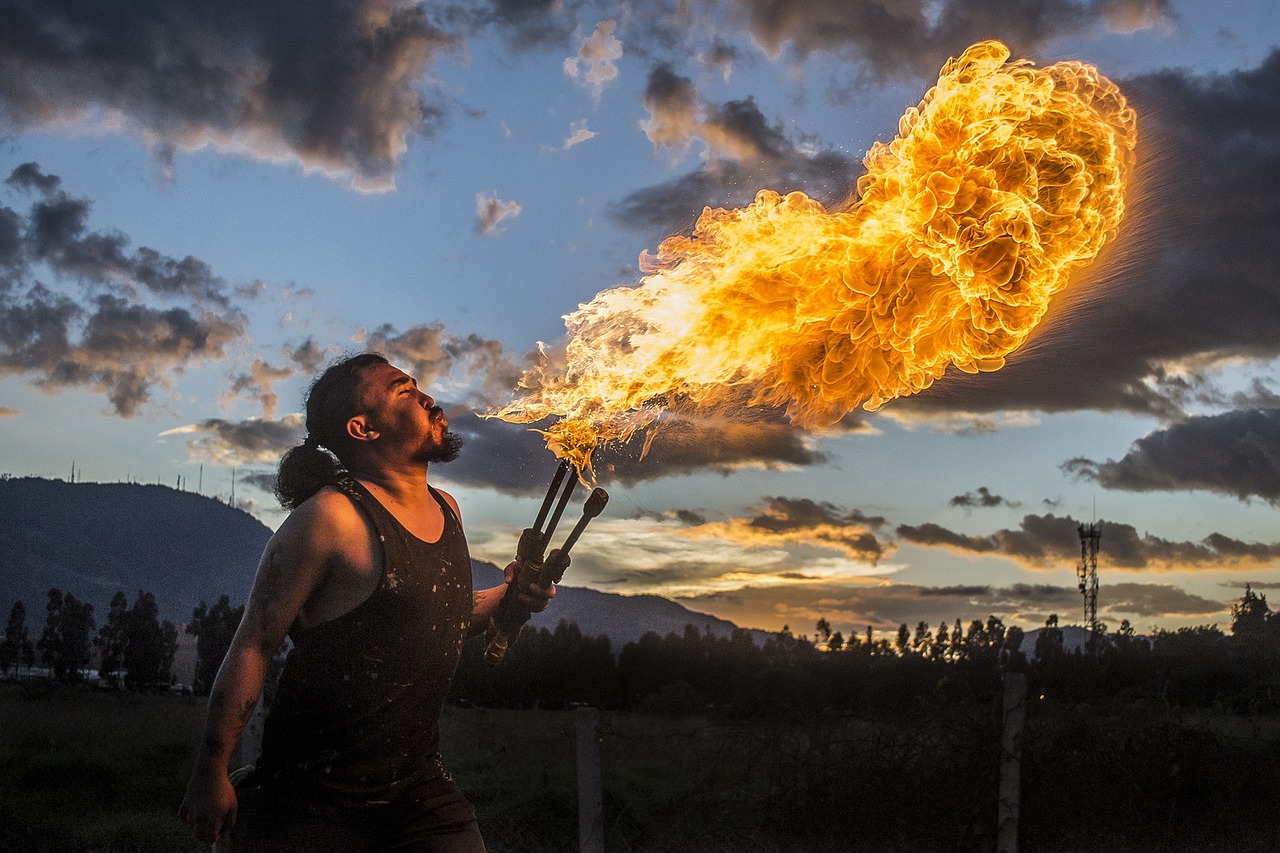
Landscaping Techniques
When it comes to protecting your home from wildfires, play a pivotal role in creating a fire-resistant environment. Think of your yard as a fortress; the right landscaping can serve as the first line of defense against encroaching flames. One of the most effective strategies is to choose fire-resistant plants that can withstand heat and flames, helping to create a buffer zone around your property. These plants not only reduce the risk of fire spreading but also enhance the overall aesthetic of your landscape.
Proper spacing between trees and shrubs is another essential landscaping technique. Imagine your plants as soldiers standing guard; if they are too close together, they can act like a bridge for fire to leap from one to another. A good rule of thumb is to maintain a distance of at least 10 feet between trees and any structures. This spacing can significantly slow down the spread of fire and give you and your family more time to react in case of an emergency.
Additionally, consider the layout of your yard. Creating zoned areas can further enhance your home's fire safety. For instance, you might have a non-flammable zone near your home that consists of gravel, stone, or other non-combustible materials. This area can act as a buffer, preventing flames from reaching your home directly. Beyond this zone, you can incorporate fire-resistant plants, and then further out, you can have a more natural landscape with trees and shrubs that are less fire-resistant.
Another effective landscaping technique is to maintain your plants regularly. This includes pruning dead branches, clearing away leaves, and ensuring that your yard is free of debris. Think of it as a spring cleaning ritual for your garden; keeping it tidy not only improves its appearance but also reduces fire hazards. Remember, a well-maintained space is less likely to become a fire's fuel source.
In addition to these techniques, it’s essential to consider the irrigation methods you employ. Keeping your plants well-watered can make them less susceptible to ignition. Consider using drip irrigation systems that deliver water directly to the roots, ensuring that your plants remain hydrated without wasting water. This method not only promotes healthy plant growth but also contributes to fire resistance.
In summary, implementing effective landscaping techniques is crucial in safeguarding your home against wildfires. By selecting fire-resistant plants, maintaining proper spacing, creating non-flammable zones, and keeping your yard tidy, you can significantly reduce the risk of fire damage. Remember, your yard is not just a space for relaxation; it's also a critical part of your home’s defense strategy during wildfire season.
- What are some examples of fire-resistant plants? Plants like lavender, sage, and certain types of succulents are known for their fire-resistant properties.
- How often should I maintain my defensible space? Regular maintenance should be done at least once a month, with more frequent checks during dry seasons.
- Can I use mulch in my landscaping? Yes, but opt for non-flammable mulches such as gravel or stone instead of wood chips.
- What is considered a defensible space? A defensible space is an area around your home that has been modified to reduce fire hazards, typically extending at least 30 feet from the structure.
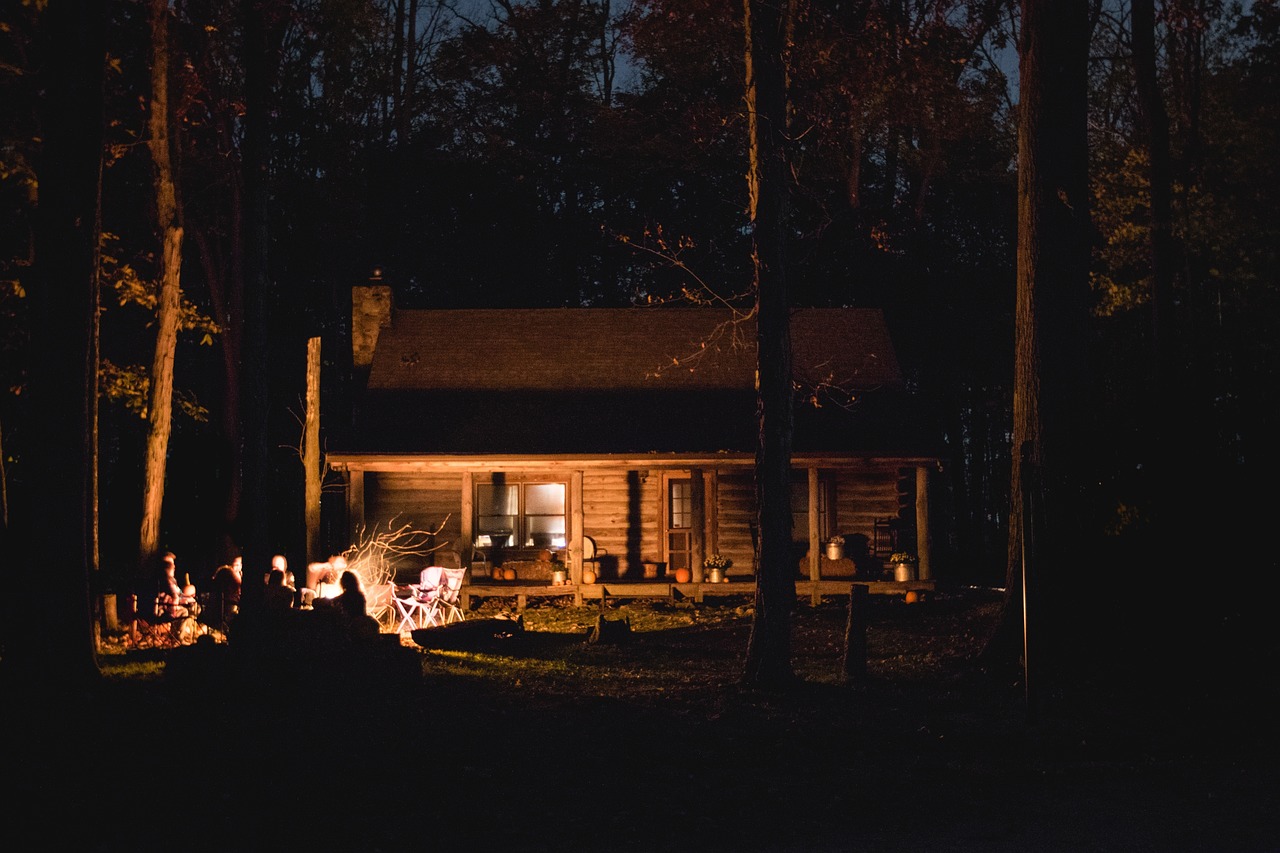
Plant Selection
When it comes to protecting your home during wildfire season, choosing the right plants for your landscape is crucial. Not all plants are created equal; some are more flammable than others. To create a fire-resistant landscape, you want to opt for plants that have a higher moisture content and are less likely to ignite easily. Think of it like choosing a team for a game—some players are just better suited for the challenges ahead.
Consider incorporating native plants into your garden. These plants are not only adapted to your local climate but also require less water and maintenance. They have evolved to withstand local pests and diseases, making them a smart choice for your defensible space. For example, in arid regions, plants like sagebrush and manzanita are excellent options due to their low flammability and resilience.
It's also important to think about spacing between plants. A common mistake is crowding plants together, which can create a ladder effect, allowing fire to climb from one plant to another. Aim for a spacing of at least 3 to 5 feet between shrubs and trees, and consider using decorative gravel or stone as ground cover to further reduce fire risks.
Here’s a quick look at some fire-resistant plants you might want to consider:
| Plant Name | Characteristics |
|---|---|
| Sagebrush | Low moisture content, native to many regions, and drought-resistant. |
| Manzanita | Thick, waxy leaves that are less likely to catch fire. |
| Lavender | Highly aromatic, drought-resistant, and has a lower risk of ignition. |
| Red Yucca | Low water needs and can thrive in harsh conditions, making it a resilient choice. |
Regular maintenance is just as important as initial selection. Make sure to prune your plants regularly, removing any dead or dry material that could easily ignite. Additionally, watering your plants during dry spells can increase their moisture content, making them less likely to catch fire. Think of it as giving your plants a drink before a big game; they perform better when they’re hydrated!
In summary, selecting the right plants for your landscape is a vital step in creating a defensible space against wildfires. By choosing fire-resistant plants, maintaining proper spacing, and keeping your garden well-watered and pruned, you can significantly reduce the risk of fire damage to your home. Remember, a little planning and care can go a long way in protecting what matters most.
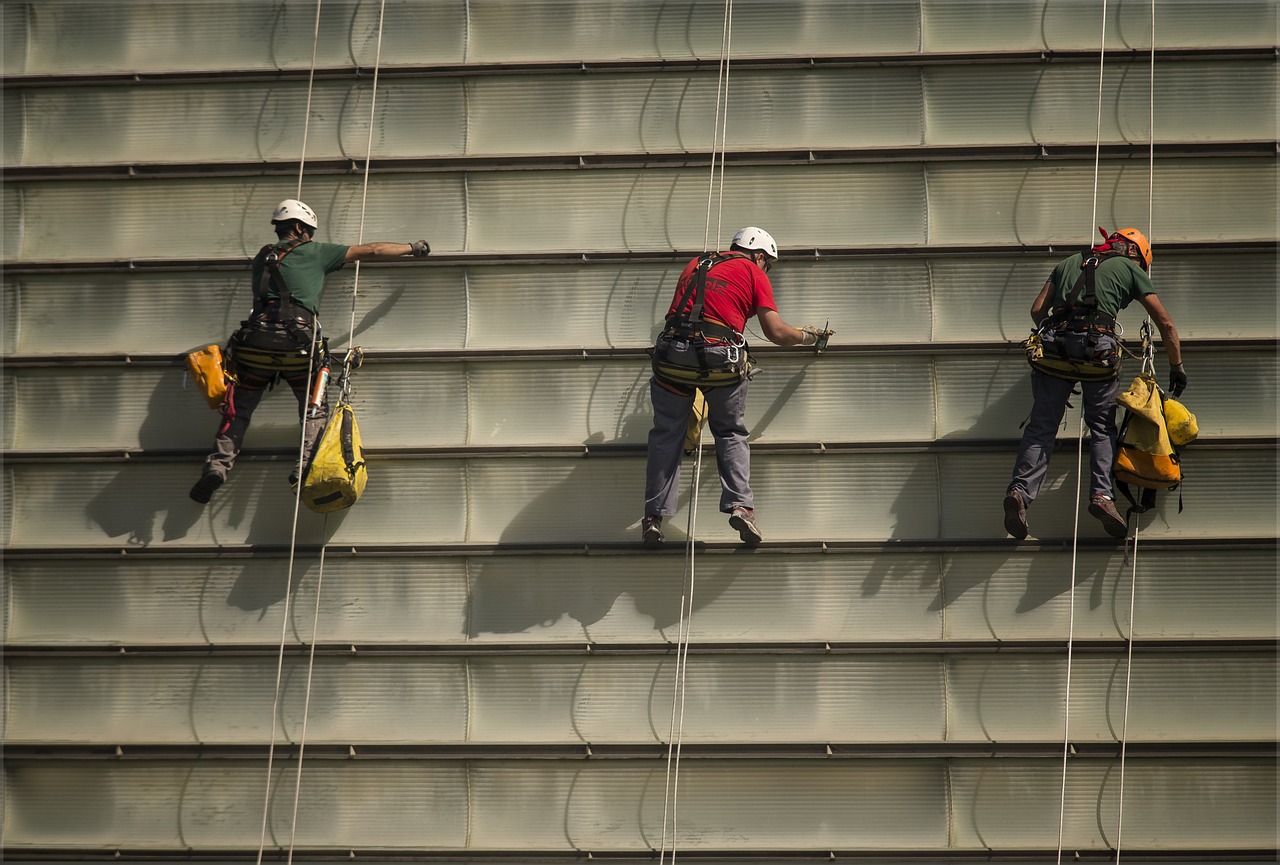
Maintenance Practices
When it comes to protecting your home from wildfires, regular maintenance practices are your best friends. Think of your defensible space as a shield; the stronger and better maintained it is, the more effective it will be against the relentless forces of nature. One of the most crucial aspects of maintaining this shield is pruning. Regularly trimming back overgrown trees and shrubs not only reduces the risk of flames reaching your home but also minimizes the amount of flammable material that could ignite nearby. Aim to keep branches at least 10 feet away from your home, and remember that the lower branches of trees should be pruned to a height of at least 6 feet off the ground.
Another essential practice is clearing debris. This includes removing dead leaves, twigs, and other organic matter that can easily catch fire. A good rule of thumb is to keep your yard clean and tidy, especially during dry seasons when wildfire risks are heightened. Consider creating a debris removal schedule—perhaps weekly or bi-weekly—so you make it a routine. The less clutter you have around your home, the less fuel there is for a potential fire.
Additionally, watering techniques play a significant role in maintaining a defensible space. During dry spells, ensure that your plants and landscaping are adequately watered. This not only helps keep them healthy but also reduces their flammability. A well-hydrated landscape can act as a buffer against wildfires. Consider installing a drip irrigation system for efficient watering, focusing on areas closest to your home, which can be particularly vulnerable.
In summary, by incorporating these maintenance practices into your routine, you create a robust line of defense against wildfires. Remember, it’s not just about planting the right vegetation; it’s about nurturing and maintaining it. Your home deserves the best protection, and with these practices, you can significantly enhance its resilience against the unpredictable nature of wildfires.
Q: How often should I prune my trees and shrubs?
A: It’s recommended to prune your trees and shrubs at least once a year, but during high-risk seasons, you might want to check them more frequently.
Q: What type of debris should I clear from my yard?
A: Focus on clearing dead leaves, branches, and any other organic material that can easily ignite. Regularly check your gutters and roof for any accumulated debris as well.
Q: How can I ensure my plants are fire-resistant?
A: Choose native plants that are adapted to your local climate and have lower oil content. Research fire-resistant plant lists specific to your area for the best options.
Q: What is the best way to water my defensible space?
A: A drip irrigation system is ideal as it delivers water directly to the roots of your plants, minimizing evaporation and ensuring they stay hydrated, especially during dry spells.

Building Materials and Home Design
When it comes to protecting your home from wildfires, the building materials you choose and the design of your home play a critical role. Think of your home as a fortress; if the walls are made of straw, it doesn’t matter how many guards you have. Similarly, using fire-resistant materials can significantly enhance your home’s ability to withstand flames. For instance, materials like stucco, brick, and concrete are known for their fire-resistant properties and can help create a barrier against approaching fires.
Moreover, the design of your home can also contribute to its fire resilience. Features such as overhangs and roof designs can either help or hinder your home’s defenses. A roof with a low pitch and made from non-combustible materials can prevent embers from igniting your home. Additionally, installing dual-pane windows can help resist heat and flames, providing another layer of protection. Remember, every small detail counts when it comes to fire safety!
Here are some important considerations regarding building materials and home design:
- Fire-Resistant Materials: Opt for materials that have a high fire rating. This includes options like fiber-cement siding and metal roofing.
- Window Design: Choose tempered glass or double-glazed windows to reduce the risk of breaking under extreme heat.
- Decking Materials: If you have a deck, consider using composite materials that are less combustible than traditional wood.
Additionally, the layout of your home can make a significant difference. For instance, positioning your home away from dense vegetation can reduce the chance of a fire spreading. Creating space between your home and any flammable materials is essential. Think of it like a moat around your castle; it keeps the danger at bay. Furthermore, using non-combustible fencing materials can also help create a protective barrier.
In conclusion, incorporating fire-resistant materials and thoughtful design elements into your home can greatly enhance its resilience against wildfires. It’s like fortifying your castle with the best defenses available. By taking these steps, you’re not just investing in your property; you’re investing in peace of mind during wildfire season.
1. What are the most fire-resistant building materials?
Fire-resistant building materials include stucco, brick, concrete, and fiber-cement siding. These materials can help protect your home from flames and heat.
2. How can I improve my home's fire safety?
Improving your home's fire safety can involve using fire-resistant materials, maintaining defensible space, and ensuring proper landscaping to reduce fire hazards.
3. Are there specific home designs that are better for wildfire-prone areas?
Yes, homes with low-pitched roofs, non-combustible siding, and tempered windows tend to perform better in wildfire conditions.
4. What role does landscaping play in wildfire prevention?
Landscaping plays a crucial role in wildfire prevention by creating a defensible space around your home, using fire-resistant plants, and maintaining proper spacing between trees and shrubs.

Emergency Preparedness Plans
When it comes to wildfire season, having a solid emergency preparedness plan is not just a good idea; it's essential for ensuring the safety of you and your loved ones. Think of it as your fireproof safety net. The unpredictability of wildfires means you need to be ready at a moment's notice. So, what should you include in your plan? First off, consider establishing clear evacuation routes. This is your roadmap to safety, and having multiple routes planned can be a lifesaver. Imagine trying to escape through a road that’s suddenly blocked by flames or debris; that’s where alternative routes come into play.
Next, communication is key. Setting up effective communication strategies ensures that you and your family stay connected during a crisis. Designate a family meeting spot outside of your immediate area where everyone can gather if you get separated. This could be a neighbor's house or a local park. Additionally, consider using group messaging apps that work even without cell service, so you can keep everyone in the loop. It’s like having a digital walkie-talkie when the going gets tough!
Don't forget to prepare an emergency kit. This kit should be easily accessible and contain essential items that you might need in case of evacuation. Think of it as your survival toolbox. Here’s a quick checklist of what to include in your kit:
- Water (at least one gallon per person per day for three days)
- Non-perishable food (enough for three days)
- Flashlight and extra batteries
- First aid kit
- Whistle to signal for help
- Multi-tool or Swiss army knife
- Important documents (insurance, IDs, medical records) in a waterproof container
- Cash in small denominations
- Clothing and sturdy shoes
Lastly, practice your plan. Conducting a fire drill isn’t just for schools; it’s for families too! Regularly review your evacuation routes and communication strategies to ensure everyone knows what to do when the alarm bells ring. This practice is like running a fire drill in your mind, making sure that when the time comes, you can act swiftly and confidently. Remember, being prepared is not just about having a plan; it's about staying calm and collected when it matters most.
Q: How often should I update my emergency preparedness plan?
A: It's a good idea to review and update your plan at least once a year, or whenever there are changes in your family situation or local wildfire risks.
Q: What should I do if I receive a wildfire alert?
A: Follow your emergency preparedness plan, evacuate if necessary, and stay informed through local news and alerts.
Q: Can I use my emergency kit for other disasters?
A: Absolutely! An emergency kit is versatile and can be used for various situations, not just wildfires.

Evacuation Routes
When it comes to wildfires, having a well-thought-out evacuation plan can be the difference between safety and disaster. Imagine waking up to the smell of smoke, the sound of crackling branches, and the sight of flames creeping closer to your home. In such a scenario, knowing your evacuation routes is crucial. It’s not just about having a single path; you should have multiple options to ensure you can escape quickly and safely, no matter where the fire is coming from.
Start by mapping out your primary and secondary evacuation routes. Your primary route should be the most direct path to safety, while your secondary route should be an alternative in case the primary is blocked. Consider factors such as road conditions, traffic patterns, and potential hazards along the way. You might even want to drive these routes occasionally to familiarize yourself with them. This way, when the time comes, you won’t be caught off guard or confused.
Additionally, it’s wise to share these routes with your family and neighbors. Communication is key in emergencies. Discuss your plans during family meetings or neighborhood gatherings. This not only ensures everyone knows where to go but also fosters a sense of community and support. You can even create a simple map to display in your home, highlighting the routes and any landmarks that can help guide you in the chaos.
Another aspect to consider is the timing of your evacuation. Wildfires can spread rapidly, so it’s essential to leave early if you receive any warnings. Waiting until the last minute can put you and your loved ones in unnecessary danger. Monitor local news, social media, and emergency alerts to stay informed about fire conditions. Some apps can even provide real-time updates on wildfires in your area, helping you make informed decisions.
In case of an emergency, having a go-bag ready can save precious time. This bag should include essential items such as:
- Important documents (ID, insurance papers)
- Medications and first aid supplies
- Water and non-perishable food
- A flashlight and batteries
- Clothing and personal items
Remember, the goal of having multiple evacuation routes is to ensure that you and your family can escape to safety without hesitation. Take time to practice your evacuation plan so that everyone knows their role and what to do in case of an emergency. Just like rehearsing for a play, the more you practice, the more prepared you’ll be when the curtain rises on an unexpected situation.
Q: How many evacuation routes should I have?
A: Ideally, you should have at least two evacuation routes. This ensures that if one route is blocked or unsafe, you have an alternative path to safety.
Q: What should I include in my go-bag?
A: Your go-bag should include important documents, medications, food and water, a flashlight, clothing, and any personal items you may need. Make sure to customize it based on your family's specific needs.
Q: How can I stay updated on wildfire conditions?
A: You can stay informed by monitoring local news stations, following emergency services on social media, and using apps specifically designed to provide real-time updates about wildfires in your area.
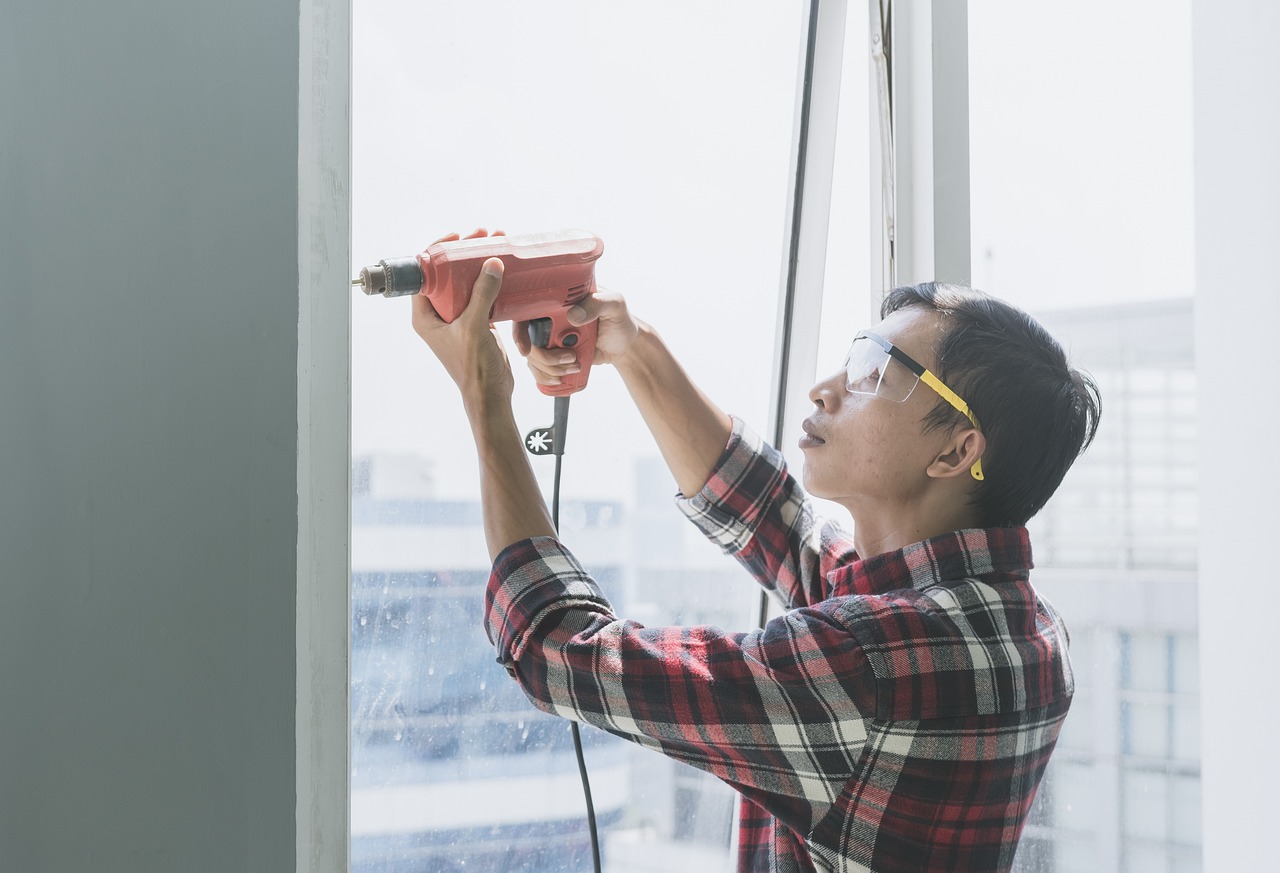
Communication Strategies
When it comes to wildfire season, having a solid communication strategy is crucial for ensuring the safety of your family and neighbors. Imagine the chaos of a wildfire approaching your home; without a plan, it can feel like you’re navigating through a maze without a map. So, how can you create a communication strategy that works? First, it’s essential to establish a clear system for sharing information. This might include setting up a group chat or using a family communication app where everyone can stay updated in real-time. By having a dedicated space for communication, you reduce the chances of misinformation spreading, which can lead to panic.
Next, consider the importance of regular check-ins with your family and neighbors. You can schedule weekly or monthly meetings to discuss your wildfire preparedness plans. This is not just about sharing your strategies; it's also about fostering a sense of community. When everyone is on the same page, it creates a support system that can be invaluable during emergencies. You might even want to create a quick reference guide that outlines key contact numbers, evacuation routes, and meeting points in case of an emergency.
Additionally, it’s wise to keep a list of local resources and contacts handy. This can include fire departments, local emergency services, and community organizations that offer assistance during wildfires. Make sure everyone in your family knows how to access this information quickly. In a crisis, every second counts, and having these details at your fingertips can make all the difference.
Don't forget to utilize social media and local news outlets as part of your communication strategy. These platforms can provide real-time updates on wildfire conditions and alerts. Encourage your family to follow local fire departments and emergency services on social media to stay informed. You might also want to set up notifications on your phone for emergency alerts, ensuring you receive immediate updates about any threats in your area.
In summary, effective communication strategies during wildfire season involve a combination of technology, community engagement, and preparedness. By establishing a clear system for sharing information, maintaining regular contact with your support network, and utilizing local resources, you can significantly enhance your family's safety and response during a wildfire emergency. Remember, in the face of wildfires, communication can be your lifeline.
- What should I include in my emergency communication plan?
Your emergency communication plan should include contact information for family members, local emergency services, evacuation routes, and meeting points. - How can technology help during a wildfire?
Technology can help by providing real-time alerts and updates through apps and social media, allowing you to stay informed about wildfire risks. - Why is community communication important during wildfires?
Community communication fosters a support system, ensuring everyone is informed and can react quickly to threats, enhancing overall safety.

Staying Informed and Alert
Staying informed during wildfire season is not just a good idea; it's a necessity. Imagine being caught off guard when a wildfire approaches your home. The chaos and confusion can be overwhelming, but with the right information at your fingertips, you can make quick decisions that could save your life and property. To effectively protect yourself and your loved ones, it's essential to keep an eye on various resources that provide timely updates on wildfire conditions. Local news outlets, social media platforms, and emergency services are invaluable tools in your wildfire preparedness arsenal.
One of the best ways to stay alert is by utilizing technology. There are numerous apps and websites designed specifically to keep you updated on wildfire risks in your area. These tools can send you real-time alerts, ensuring that you are aware of any changes in fire conditions. For instance, you might consider downloading apps like FEMA, Red Cross, or Wildfire Alert, which provide notifications based on your location. These applications can serve as your digital watchdog, alerting you to any immediate threats.
In addition to technology, it's crucial to maintain open lines of communication with your family and neighbors. Establish a system for sharing information—whether it's through group texts or neighborhood social media groups. This way, everyone can stay informed about the latest updates and any necessary evacuation plans. It's like being part of a well-oiled machine; when everyone knows their role, the community can respond swiftly and efficiently in the face of danger.
Moreover, consider attending local community meetings or workshops focused on wildfire preparedness. These gatherings often feature experts who can provide insights into the specific risks your area faces and how best to mitigate them. Engaging with your community not only equips you with vital knowledge but also fosters a sense of solidarity among residents, which can be incredibly comforting during a crisis.
To summarize, here are some key resources and strategies for staying informed and alert during wildfire season:
- Local News: Tune in to your local news stations for updates on fire conditions.
- Social Media: Follow local fire departments and emergency services on platforms like Twitter and Facebook for real-time updates.
- Emergency Apps: Download apps that provide alerts and information about wildfires.
- Community Meetings: Participate in local meetings to learn about wildfire risks and preparedness strategies.
By actively engaging with these resources, you can significantly enhance your preparedness for wildfire season. The more informed you are, the better equipped you'll be to handle any situation that arises. Remember, when it comes to wildfires, knowledge is not just power; it's a lifeline.
Q1: What should I do if I receive a wildfire alert?
A1: If you receive a wildfire alert, follow the instructions provided by local authorities. Prepare to evacuate if necessary, gather your emergency kit, and ensure your family is ready to leave safely.
Q2: How can I ensure my home is prepared for wildfires?
A2: Create a defensible space around your home by clearing flammable materials, using fire-resistant landscaping, and maintaining your property regularly. Additionally, consider using fire-resistant building materials.
Q3: Are there any specific apps for tracking wildfires?
A3: Yes, apps like FEMA, Red Cross, and Wildfire Alert provide real-time updates and alerts about wildfire conditions in your area. Download them to stay informed.
Q4: What should I include in my emergency kit?
A4: Your emergency kit should include water, non-perishable food, medications, first-aid supplies, important documents, and any necessary personal items. Don’t forget to include items for your pets if applicable.
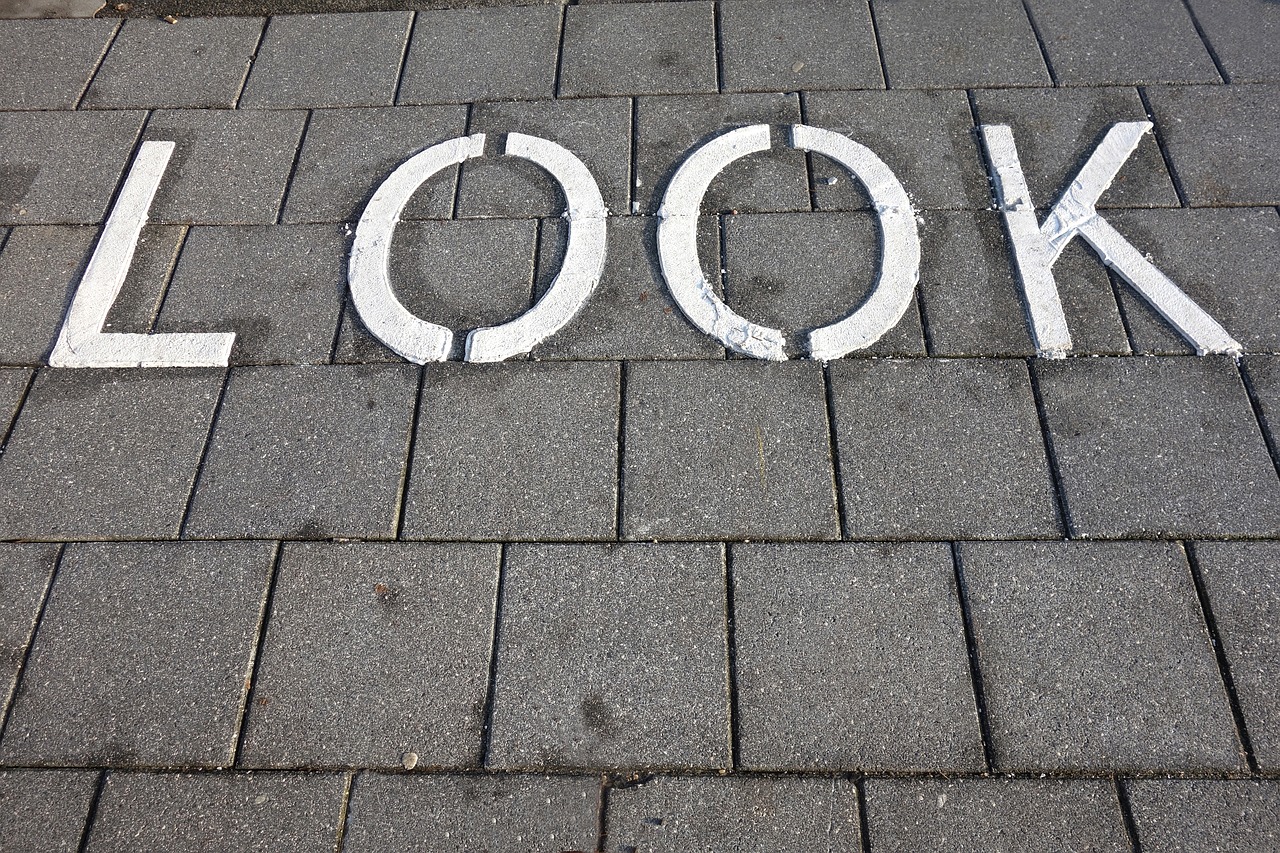
Utilizing Technology
In today's digital age, technology plays a pivotal role in keeping us informed and safe, especially during wildfire season. Imagine having the power to receive real-time updates about wildfire risks right at your fingertips! With the right tools, you can transform your smartphone into a lifeline that helps protect your home and family. There are several innovative technologies designed to monitor wildfire conditions, provide alerts, and even assist in emergency planning.
One of the most effective ways to stay updated is by utilizing dedicated apps that focus on wildfire tracking. These applications often provide features such as:
- Real-time alerts: Get instant notifications about wildfire outbreaks in your area.
- Interactive maps: Visualize the spread of wildfires and see which areas are at risk.
- Air quality monitoring: Check the air quality index to understand the impact of smoke on your health.
Additionally, social media platforms can be invaluable during wildfire season. By following local fire departments, emergency services, and community groups, you can access timely information and updates. These platforms often serve as a hub for community engagement, allowing residents to share their experiences and resources.
Moreover, many local governments and fire departments have adopted advanced technologies such as satellite imagery and drones for fire monitoring. These tools help in assessing fire behavior, predicting its path, and deploying resources more effectively. For instance, drones equipped with thermal imaging can identify hotspots that are not visible to the naked eye, allowing firefighters to act quickly and efficiently.
It's also essential to consider how technology can aid in your emergency preparedness plan. There are various tools that can help you create and maintain an effective plan:
- Emergency kit apps: These apps guide you in assembling a comprehensive emergency kit tailored to your family’s needs.
- Communication tools: Establish group chats or use apps designed for emergency communication to keep in touch with family and friends during a crisis.
Finally, don't underestimate the power of community resources that leverage technology. Many neighborhoods have established online forums or groups where residents can share information, resources, and support during wildfire season. Joining these communities can provide you with additional insights and assistance that may be crucial in an emergency.
In conclusion, utilizing technology effectively can enhance your preparedness and response to wildfires. By staying informed and connected through various digital resources, you can ensure that you and your loved ones are ready to face any challenges that may arise during wildfire season.
Q: What are some recommended apps for wildfire alerts?
A: Some popular apps include "Wildfire Tracker," "FEMA," and "Ready for Wildfire," which provide real-time updates and safety information.
Q: How can I ensure my family stays connected during a wildfire?
A: Set up a communication plan that includes designated meeting spots and an emergency group chat to keep everyone informed.
Q: Are there any community resources available for wildfire preparedness?
A: Yes, many local fire departments and community organizations offer workshops and resources to help residents prepare for wildfires.
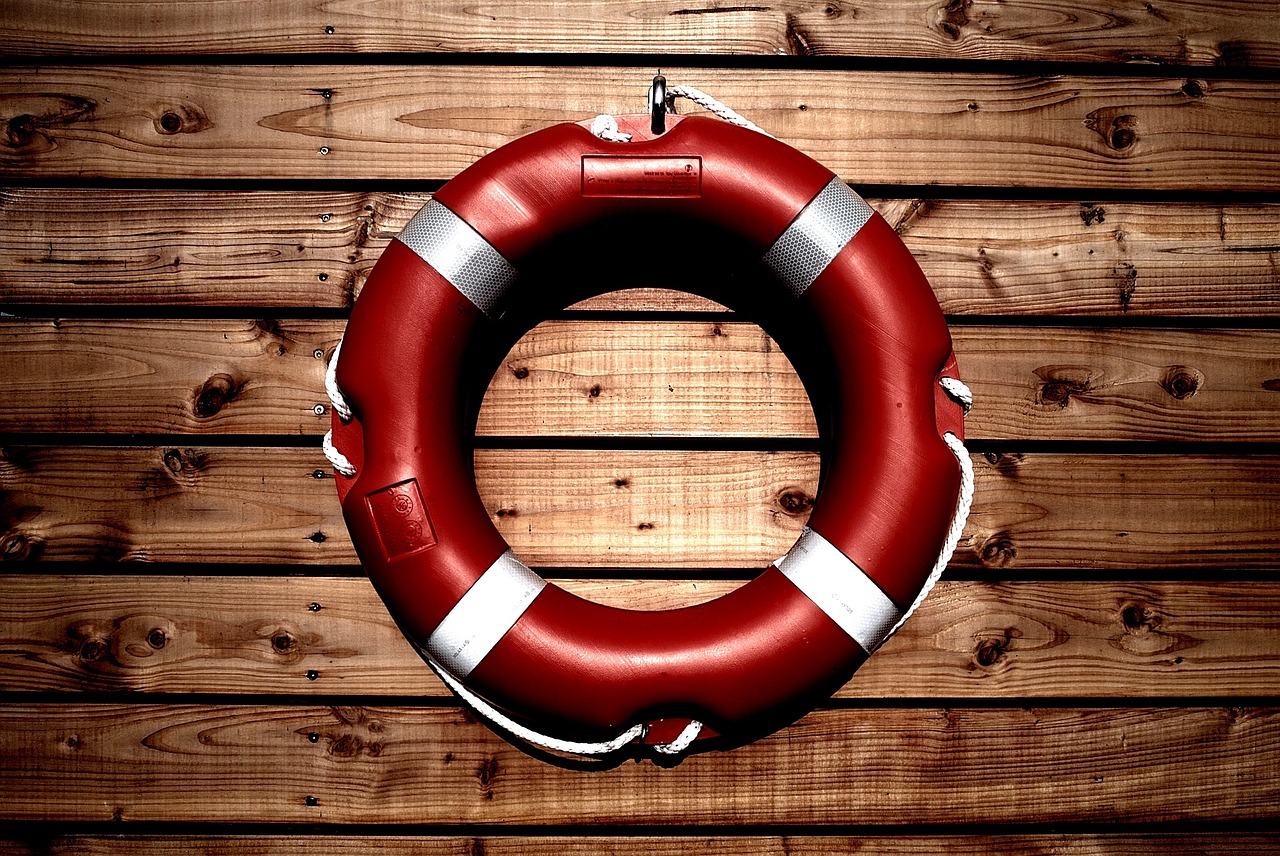
Community Resources
When it comes to protecting your home during wildfire season, community resources play a vital role in keeping you informed and safe. Local organizations, fire departments, and community groups often provide valuable support and information tailored to your specific area. They can help you understand the unique wildfire risks in your region, as well as offer resources for preparation and recovery. For instance, many local fire departments conduct educational workshops on fire safety, teaching residents how to create defensible spaces and maintain their properties effectively.
Moreover, community resources often include emergency response teams that are trained to assist in evacuation plans and provide immediate help during a wildfire crisis. They can guide you in setting up communication strategies with your neighbors, ensuring everyone is aware of potential threats and knows where to turn for assistance. Additionally, local non-profits and volunteer organizations can offer support in the aftermath of a wildfire, helping families and individuals rebuild and recover.
To make the most of these community resources, it's essential to stay connected and engaged. Here are some ways you can tap into the support available:
- Attend Local Meetings: Participate in community meetings focused on wildfire preparedness. These gatherings often feature experts who share insights and answer questions.
- Follow Local Social Media: Many fire departments and community organizations have social media pages that provide real-time updates on wildfire conditions and safety tips.
- Join Neighborhood Groups: Connect with your neighbors through local associations or online platforms. Building a network can enhance communication and preparedness.
In addition, don’t forget to check for any local apps or websites that provide alerts and information specific to your area. Many communities have embraced technology to keep residents informed about wildfire risks and safety measures. By leveraging these community resources, you'll not only enhance your own safety but also contribute to a more resilient neighborhood.
Q: What should I do if a wildfire is approaching my home?
A: If a wildfire is approaching, follow your emergency preparedness plan. Evacuate immediately if instructed, using your predetermined evacuation routes. Stay informed through local news and emergency services.
Q: How can I find out about local wildfire risks?
A: You can stay updated by following local fire department social media pages, subscribing to community alerts, and attending local safety meetings.
Q: Are there any financial resources available for wildfire recovery?
A: Yes, many local and federal programs offer financial assistance for those affected by wildfires. Check with your local government or disaster relief organizations for available resources.
Frequently Asked Questions
-
What are the primary risks associated with wildfires?
Wildfires can pose several risks, including property damage, loss of life, and environmental destruction. Factors such as dry weather, high winds, and the presence of flammable vegetation significantly increase the likelihood of a wildfire. Understanding these risks is essential for preparing your home and ensuring the safety of your family.
-
How can I create a defensible space around my home?
Creating a defensible space involves clearing flammable materials, maintaining a safe distance between vegetation and your home, and utilizing fire-resistant landscaping techniques. Aim for a minimum of 30 feet of defensible space by removing dead plants, trimming trees, and using gravel or non-flammable materials in your landscaping.
-
What types of plants are considered fire-resistant?
Fire-resistant plants are typically those that have high moisture content, thick leaves, and low resin content. Examples include lavender, succulents, and certain types of ornamental grasses. Incorporating these plants into your landscape can significantly reduce the risk of fire spreading to your home.
-
What maintenance practices should I follow for my defensible space?
Regular maintenance practices include pruning trees and shrubs to create space and reduce fuel loads, clearing debris such as leaves and branches, and ensuring proper irrigation to keep plants healthy. It's also important to inspect your property regularly for any changes that may increase fire risk.
-
How can I prepare an emergency plan for wildfire season?
To prepare an effective emergency plan, identify multiple evacuation routes from your home, designate a meeting place for family members, and create an emergency kit that includes essential supplies. Regularly review and practice your plan to ensure everyone knows what to do in case of a wildfire.
-
What technology can help me stay informed about wildfires?
There are various apps and websites that provide real-time updates on wildfire risks, including alerts from local fire departments and weather services. Consider using apps like FEMA, Red Cross, or local emergency management apps to stay informed and receive timely notifications.
-
How can my community assist during wildfire season?
Local community resources, such as fire departments and emergency management organizations, often provide education, support, and resources for wildfire preparedness. Engage with your community through meetings or social media to stay updated on local initiatives and available assistance.





